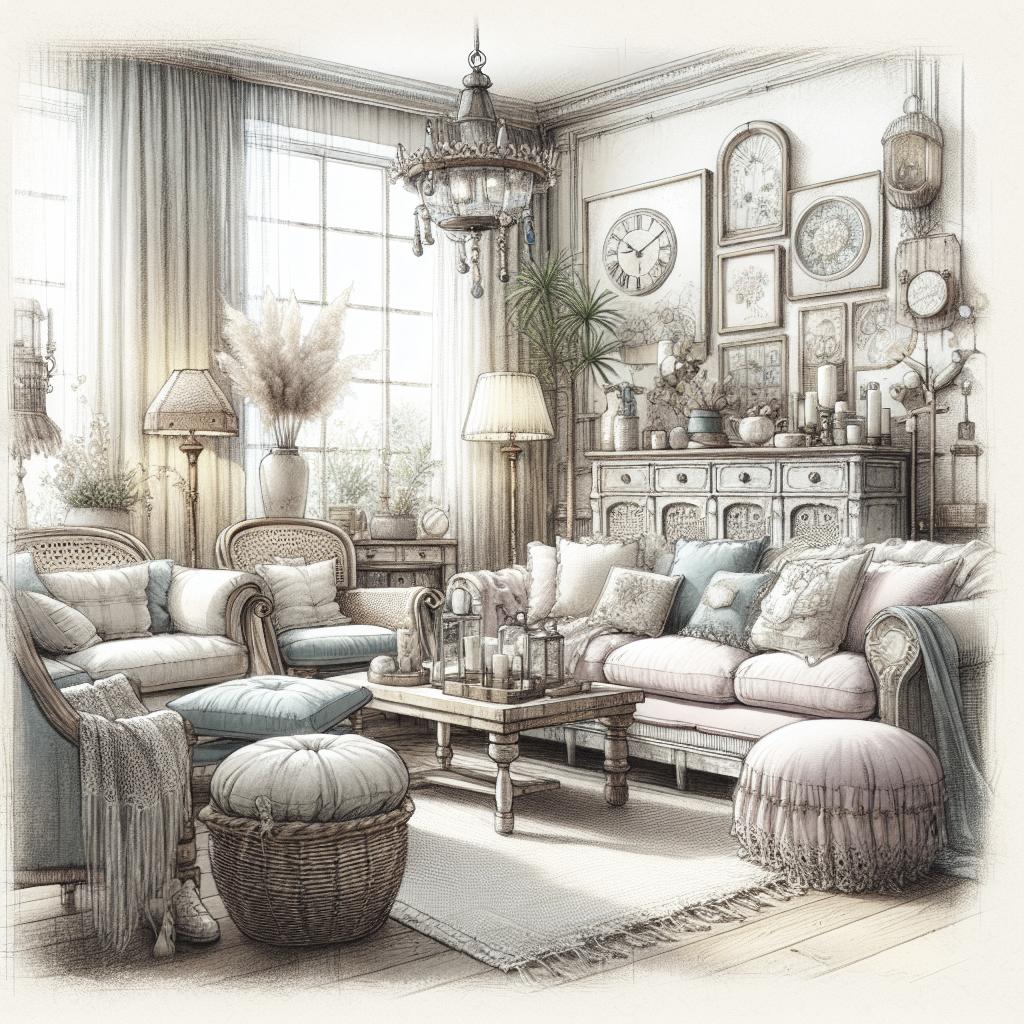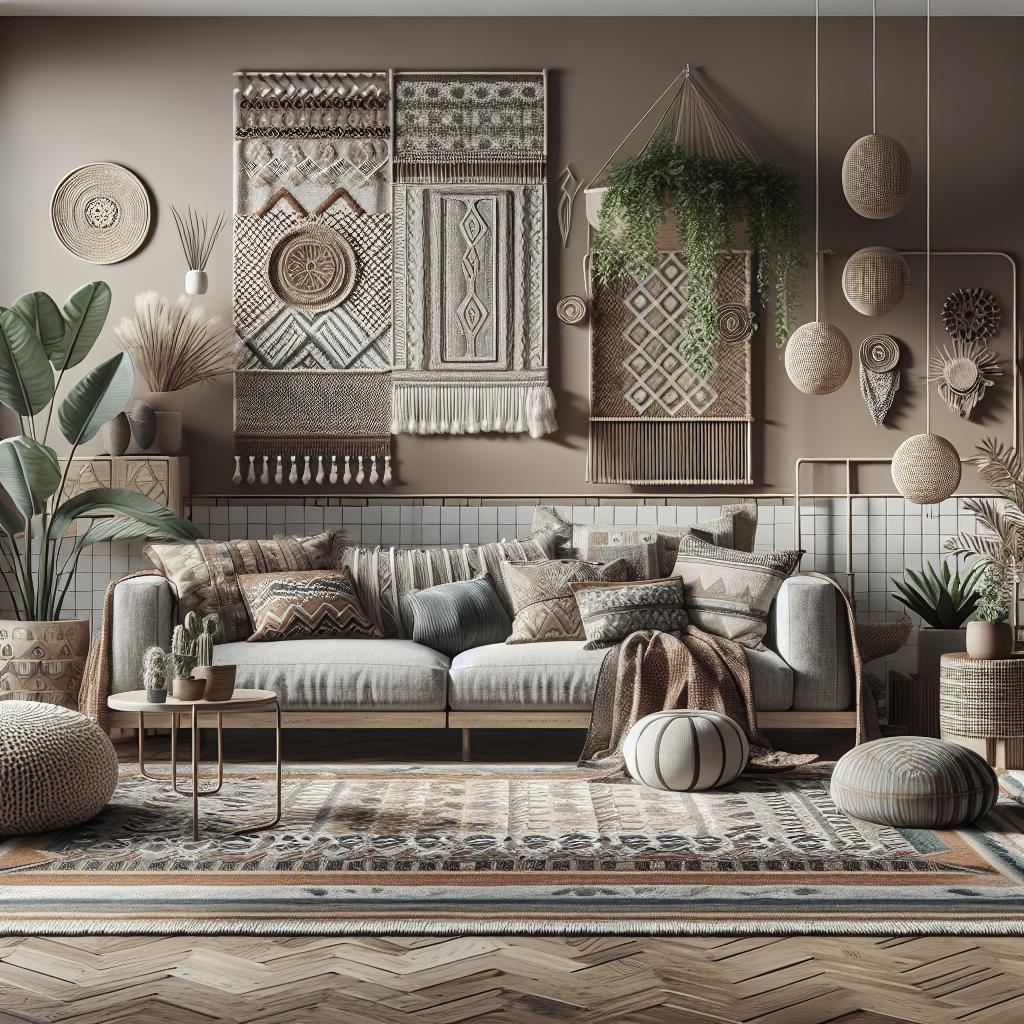Introduction Shabby chic is a unique interior design style that seamlessly blends the cozy elegance of vintage decor with a touch of contemporary flair. This article will delve into the intricacies of shabby chic, exploring its historical roots, distinctive features, and guidance on how to achieve this popular aesthetic in your own home. We will also discuss influential figures such as Rachel Ashwell who helped popularize the style, and provide insight into prominent examples of shabby chic design you can visit. Additionally, we’ll look at the inspirations behind this charming style and address frequently asked questions. Whether you are a seasoned interior designer or a novice home decorator, this comprehensive guide aims to inspire creativity and offer practical tips on incorporating the timeless appeal of shabby chic into any space. Table of Contents – Introduction – Exploring the hybrid style of shabby chic – How did shabby chic begin? – Origins of the simple yet elegant style – Rachel Ashwell launches shabby chic into popularity – Prime examples of shabby chic design you can visit – Palace of Versailles – The Prairie – Looking deeper into the style’s inspirations – Guide Sections – Shabby Chic Guide – Contrasting Sides – Shabby Chic Guide – Features – Shabby Chic Guide – Achieve the Look – Frequently Asked Questions – Shabby Chic – Future Prospects Exploring the hybrid style of shabby chic The allure of shabby chic lies in its seamless blend of old and new, creating spaces that are both aesthetically pleasing and profoundly comfortable. This style is characterized by its use of distressed furnishings, muted colors, and a balance of elegance and simplicity. By combining elements of vintage decor with modern sensibilities, shabby chic achieves a look that is charmingly eclectic yet harmoniously unified. Colors play a critical role in executing this style, with soft pastels, whites, and neutrals serving as its backbone. These colors not only add light and depth to a room but also enhance the appearance of delicate furniture pieces and ornate textiles. It is this versatility that makes shabby chic an adaptable style suitable for any room, from bedrooms to dining spaces, effortlessly bringing warmth and personality to any environment. How did shabby chic begin? Origins of the simple yet elegant style The genesis of shabby chic can be traced back to the larger cultural movements of the late 18th century, when the emergence of country-style living gained prominence in response to the rigidity of the Victorian era. This new style celebrated comfort and functionality through well-loved furniture and rustic charm, encouraging a departure from the precision and opulence associated with high society. In the 1980s, this style experienced a resurgence, partly inspired by the desire to reuse and recycle older, meaningful items instead of discarding them. This paved the way for shabby chic to become a beloved style that reimagines the beauty of antique and vintage pieces through a contemporary lens. By incorporating elements such as patina finishes and natural fabrics, shabby chic embraced a lived-in look that was both timeless and sustainable. Rachel Ashwell launches shabby chic into popularity Often credited with bringing shabby chic into mainstream recognition, Rachel Ashwell’s work in the late 1980s and early 1990s popularized the aesthetic of what is now known as shabby chic. Through her innovative designs and interior styling, Ashwell highlighted the appeal of mixing high and low, new and old, in sophisticated yet approachable settings. Her brand, Shabby Chic, along with her published works, has provided inspiration for millions who wish to recreate this relaxed yet elegant style in their own homes. Ashwell’s dedication to creating practical and beautiful spaces has had a lasting influence on the world of interior design, reinforcing the concept that style can be both chic and cozy simultaneously. Prime examples of shabby chic design you can visit Palace of Versailles The Palace of Versailles is a stunning testament to the antiquity and grandeur that can inspire shabby chic decor. While its vast collection of ornate furnishings and gilded decor might seem far removed from the relaxed elegance of shabby chic, it offers valuable lessons in combining different styles to create a cohesive and luxurious ambiance. The Versailles gardens and the opulent private chambers exemplify the potential to harmonize opulence with personal comfort—principles that align closely with shabby chic fundamentals. The Prairie Rachel Ashwell’s The Prairie in Round Top, Texas, exemplifies shabby chic in a real-life setting. This charming bed-and-breakfast exudes laid-back luxury with its distressed wooden floors, vintage finds, and warm hospitality, encapsulating the principles of shabby chic style. Each room at The Prairie is a testament to how the style can cater to personal tastes while maintaining its core philosophy of comfort and elegance. Visiting locations like The Prairie offers direct insights into how this design approach can be personalized to fit any space, large or small. Looking deeper into the style’s inspirations Shabby chic draws inspiration from a variety of sources, combining elements from different periods and styles to create a look that is complex yet unpretentious. European countryside homes, particularly those found in Italy, France, and England, provide the baseline inspiration with their weathered elegance and commitment to comfort. The use of antiques and heirlooms is particularly significant, lending character and history to modern interiors. This style is also inspired by the concept of sustainable living; it values the repurposing and upcycling of old furniture and materials, transforming them into stunning focal points without the need for extensive renovations. By embracing imperfections and celebrating craftsmanship, shabby chic encourages creativity and an appreciation for stories behind each piece, creating homes that are as unique as they are beautiful. Guide Sections Shabby Chic Guide – Contrasting Sides Shabby chic comfortably straddles contrasting design elements to establish its unique charm. Soft, muted palettes contrast with sturdily built furniture, while worn textures complement clean lines. The style encourages an interplay of casual with refined, where fine china might share space with weather-beaten wood, creating an atmosphere that is both inviting and effortlessly stylish. Balancing these contrasts requires a keen eye for symmetry and scale, ensuring that no one element overpowers another. Utilize light, airy fabrics to counter the weight of robust wooden structures, and select simple, unfussy adornments to balance ornate vintage pieces, achieving a look that is layered but not cluttered. Shabby Chic Guide – Features One of the defining features of shabby chic design is its emphasis on a distressed, weathered look that suggests history and use. Often achieved through painting techniques such as whitewashing or sanding, the aim is to create an aesthetic that embraces imperfections as inherent beauty. Textures are equally important, with materials such as lace, cotton, and linen offering soft contrasts to the solid, often rough surfaces. Floral patterns, oversized furniture, and a mix of contemporary and vintage accents are also hallmarks of this style. Personal touches—be it family photos, collected mementos, or custom art pieces—further enhance the intimate ambiance that shabby chic seeks to cultivate. Ultimately, every item within a space is chosen for its ability to contribute to an atmosphere of comfort and personal expression. Shabby Chic Guide – Achieve the Look To achieve a shabby chic look, start by choosing a color palette that embodies tranquility with shades like duck egg blue, muted pink, or crisp white. Opt for furniture pieces with character—perhaps a rustic farmhouse table or a vintage dresser—and use textiles like ruffled pillows, crocheted throws, and lace curtains to add layers of cozy detailing. Decor elements should tell a story; mix eclectic vintage finds with modern pieces for a lived-in feel. Don’t shy away from incorporating the unexpected, like a decorative chandelier in a casual setting, and experiment with mismatched elements for a playful yet sophisticated look. With shabby chic, every imperfection adds to the overall charm, encouraging creativity and personal flair. Frequently Asked Questions – Shabby Chic 1. What makes shabby chic different from other styles? – Shabby chic stands out for its emphasis on blending distressed items with contemporary pieces. Unlike minimalist styles, it embraces an abundance of texture and sentimental elements, creating a warm, lived-in look that still feels polished. 2. Is shabby chic still popular today? – Yes, shabby chic remains popular due to its timeless aesthetic and adaptability. It continues to evolve, integrating with other trends such as modern farmhouse and bohemian to suit contemporary tastes while retaining its foundational appeal. 3. Can shabby chic be applied to modern homes? – Absolutely. Shabby chic can be adapted to suit any space by focusing on integrating vintage-inspired pieces with a modern twist. It offers flexibility and creativity, allowing homeowners to infuse their personality into their living areas harmoniously. Future Prospects
| Aspect | Details |
|---|---|
| Defining Characteristics | Blend of vintage and modern, distressed finishes, muted color palette |
| Historical Roots | Originated in 18th-century Europe, popularized by Rachel Ashwell |
| Key Locations | Palace of Versailles, The Prairie |
| Main Inspirations | European countryside, sustainability, and upcycling |
| Core Elements | Distressed furnishings, soft accents, personal touches |
| DIY Tips | Choose soft colors, incorporate vintage pieces, prioritize comfort |
| Popularity | Timeless appeal, continually evolving with current trends |


